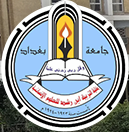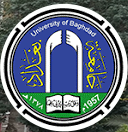Abstract
The use of appropriate and accurate language is of utmost importance when describing people on the move and their dilemma, particularly refugees and displaced persons who have unique legal protection, so there are a lot of scholars who have investigated the United Nation High Commissioner for Refugees' (UNHCR) reports, but no one has examined representational and interactional meanings of UNHCR reports on displaced Iraqis. Accordingly, this research aims to explore the role of UNHCR reports in enhancing the value of the humanitarian, which is attributed to the uniqueness of its use of language. This study investigates the manner in which the textual content interacts with photographic images that are associated with the category of of UNHCR reports. Four reports are analysed with regard to the representational and interactional structures of photos and transitivity analysis of texts. The present study adapts Multimodal Discourse Analysis by Kress and van Leeuwen (2006) and Transitivity System proposed by Halliday (2004). Based on the results, this paper concludes that these reports are effective and have positive impacts on the readers with persuasive consequences. It is found that the participants roles of Actors and Goals of both photos and texts are more frequent than the other roles of participants. These roles are connected with most dominant processes, the transactional actions processes of the images and the material processes of texts. Thus, there is a great focus on an folding actions or events more than on what the participants representing, thinking or possessing.
Article Type
Article
First Page
36
Last Page
17
Publication Date
3-15-2025
Creative Commons License

This work is licensed under a Creative Commons Attribution 4.0 International License.
Recommended Citation
Fattah, Sahar Abdulrazzaq and Hussein, Ahmed Sultan
(2025)
"Representational and Interactional Meanings of UNHCR Reports on Displaced Iraqis,"
Alustath Journal for Human and Social Sciences: Vol. 64:
Iss.
1, Article 4.
DOI: 10.36473/e3q3q228
Available at:
https://alustath.researchcommons.org/journal/vol64/iss1/4










